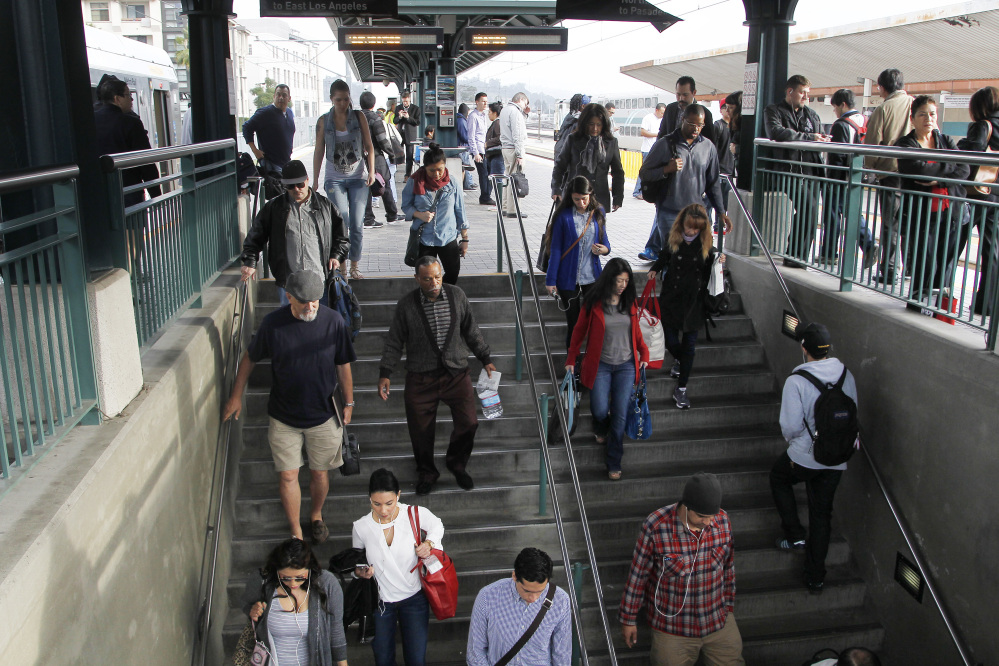LOS ANGELES — Americans are boarding public buses, trains and subways in greater numbers than any time since the suburbs began booming.
Nearly 10.7 billion trips in 2013, to be precise — the highest total since 1956, according to ridership data reported by transit systems nationally and released Monday by the American Public Transportation Association.
Transit ridership has now fully recovered from a dip caused by the Great Recession. With services restored following economy-driven cutbacks, ridership numbers appear set to continue what had been a steady increase.
“People are making a fundamental shift to having options” aside from a car in how they get around, said Michael Melaniphy, president and CEO of the public transportation association. “This is a long-term trend. This isn’t just a blip.”
Expanding bus and train networks help spur the growth.
Ridership on Los Angeles County Metropolitan Transportation Authority light-rail trains increased 6 percent over 2012, as the public took advantage of an expanded network of lines. Overall, LA Metro gained nine million trips to reach 478 million in 2013, the transport association said.
Houston and Phoenix, two cities which have been more notable for their sprawl than public transportation offerings, had large ridership gains. So did Seattle, Miami, Denver and San Diego. The New York area’s behemoth transit network saw the greatest gain, accounting for one in three trips nationally.
Transit advocates the nation’s urban shift and the concentration of new development around transit hubs show the public increasingly values the ability to get around without a car.”People want to work and live along transit lines,” Melaniphy said. “Businesses, universities and housing are all moving along those corridors.”
Send questions/comments to the editors.



Success. Please wait for the page to reload. If the page does not reload within 5 seconds, please refresh the page.
Enter your email and password to access comments.
Hi, to comment on stories you must . This profile is in addition to your subscription and website login.
Already have a commenting profile? .
Invalid username/password.
Please check your email to confirm and complete your registration.
Only subscribers are eligible to post comments. Please subscribe or login first for digital access. Here’s why.
Use the form below to reset your password. When you've submitted your account email, we will send an email with a reset code.